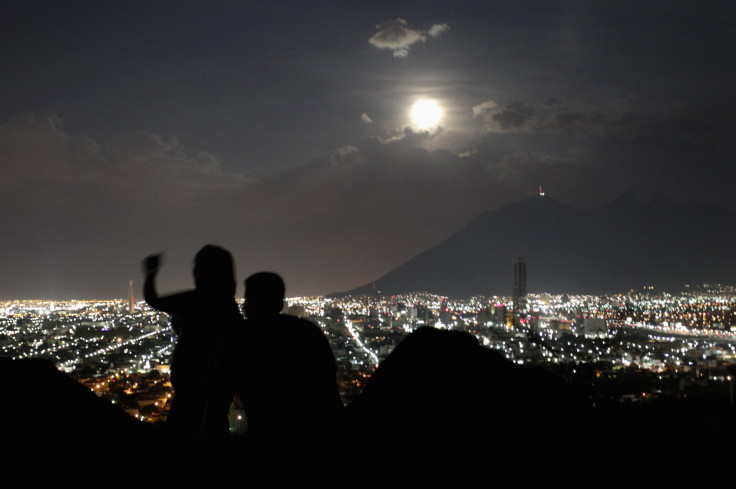Supermoon 2014 In Photos: This Year’s Biggest, Brightest Moon Lights Up The Sky

Sunday marked this year’s biggest and brightest Supermoon, with the Earth’s natural satellite at its closest distance from the planet. Dubbed as “Super Moon Monday,” the Earth’s closest celestial neighbor appeared nearly seven percent bigger than its usual size.
This Sunday, a full moon happened at the same time as perigee -- when the moon's orbit brings it closest to the Earth. After this Sunday, a similar incident will occur next time on Sept. 28, 2015, Space.com reported. At perigee, the moon could be as close as about 222,000 miles from Earth and at apogee, it would be at its farthest -- about 252,657 miles away.
However, the report also argued that Sunday’s moon would be a little smaller than the Supermoon seen in March 2011. According to the report, the term “Supermoon” should only be on occasions when the moon comes “within 99 percent of its closest possible approach,” to the Earth, which would “place it within the one-percent range of 221,439 to 221,752 miles.”
Space.com also said that the next Supermoon similar to the one seen in March 2011 will come on Nov. 14, 2016, when the moon will be only 221,524 miles away from Earth. That event is expected to be Earth's closest encounter with a full moon in this decade.
Here is a set of tweets with photos of Sunday’s full moon from around the world.
The "supermoon" is seen behind the Nossa Senhora da Penha Church in Rio de Janeiro, Brazil, on August 10, 2014 pic.twitter.com/E9AuZsDWUy
— Agence France-Presse (@AFP) August 10, 2014Tonight: #Supermoon! 14% closer to Earth & 30% brighter than other full moons. http://t.co/LkqAQvRsjJ pic.twitter.com/LJYm8EBY0c
— NASA (@NASA) August 10, 2014.@AP Photo: 'Super moon' rises in the sky in front of Apollo's temple at ancient Corinth in Greece on Sunday pic.twitter.com/Y3VuafyN1I
— BuzzFeed News (@BuzzFeedNews) August 10, 2014#supermoon tonight http://t.co/nFPpm1gBiV pic.twitter.com/LtDMvVHe0W
— Kety Shapazian (@KetyBrazil) August 10, 2014Blog Photo of the Day: A #Supermoon appears in #London - http://t.co/qogk9Lx7No #AlastairGrant #supermoon2014 pic.twitter.com/YTp0DLUhIX
— APImages.com (@AP_Images) August 10, 2014PHOTO: #Supermoon rises behind the cathedral in Mdina, Malta's ancient capital city http://t.co/Brfhun01y5 pic.twitter.com/ONFxBvCdQX
— RT (@RT_com) August 10, 2014Amazing view of the 'supermoon' seen from south London, UK pic.twitter.com/SU2WbLTzkD
— HuffPostUK Pictures (@HuffPostUKPics) August 10, 2014© Copyright IBTimes 2024. All rights reserved.












